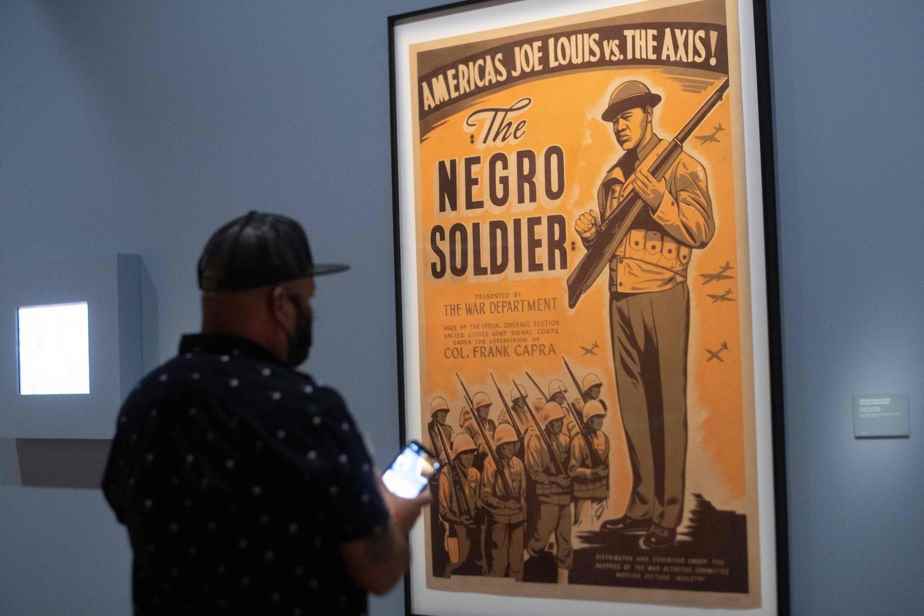(Los Angeles) Long before Denzel Washington or Spike Lee, generations of pioneering and groundbreaking black directors shaped American cinema and sought to challenge stereotypes, shows an exhibition at the Oscars museum that opens in Los Angeles on Sunday.
Posted at 12:14 p.m.
Regeneration: Black Cinema 1898 – 1971 looks back at the key moments in the little-known history of black American cinema, and in particular the hundreds of independent feature films made until the 1960s with African-American actors for an African-American audience, called ” race movies “, when racial segregation was still in force in the rooms.
The exhibition, which highlights these works largely ignored by major Hollywood studios and audiences of the time, opens with a recently rediscovered reel from 1898 showing two black vaudeville actors embracing.
“Are you ready to hear this secret? That we, blacks, have always been present in American cinema, from the start, ”launches director Ava DuVernay, during a press conference.
“Present not as caricatures or stereotypes, but as creators, producers, pioneers and enthusiastic spectators,” she adds. “We should have shown this long before. »
Regeneration is the second major temporary exhibition at the Oscar-winning Academy of Motion Picture Arts and Sciences museum, which has come under heavy criticism in recent years for its lack of diversity.
Among the objects on display are jumbled together: the Oscar of Sidney Poitier, the first African-American to win the prestigious best actor statuette in 1964 for Field lilythe tap dances of the dancing duo the Nicholas Brothers or even a costume worn by Sammy Davis Jr in the film Porgy and Bess.
Dark Manhattan

PHOTO VALERIE MACON, FRANCE-PRESSE AGENCY
Regeneration is the second major temporary exhibition at the Oscar-winning Academy of Motion Picture Arts and Sciences museum, which has come under heavy criticism in recent years for its lack of diversity.
“I was surprised because I was not aware of the existence of these feature films before starting the preparation” of this retrospective in 2016 and exploring the archives of the Academy, explains to AFP the curator, Doris Berger.
“I asked myself: ‘Why don’t we know anything about this? We should know!” “, she continues. “These are really gripping films and proof that African-American artists had all kinds of roles and there were lots of different stories.”
Audiences can now view the carefully restored footage of works such as the musical western Harlem on the Prairiehorror comedy Mr. Washington Goes To Town or the gangster feature film Dark Manhattan.
But a lot of race movies of which only the promotional posters remain have been lost forever.
When Hollywood offered black actors of the time supporting roles as “butlers and ‘mamas’ (black nannies, often slaves, to wealthy white American families, editor’s note)”, this type of independent film offered them roles “as lawyers, doctors, nurses and cowboys,” notes Doris Berger.
“It’s proof (that Hollywood) could have been so much more diverse and exciting,” she adds.
The end of the exhibition focuses on the rise of the “blaxploitation”, a genre of the 70s which put African-American actors in the spotlight, launched by the black director Melvin Van Peebles, who died a few months before the coup. of sending Regenerationjust like Sidney Poitier.
Belated but essential tribute

PHOTO VALERIE MACON, FRANCE-PRESSE AGENCY
The exhibition is part of an effort by the Academy to respond to criticism of its lack of representativeness, embodied by the #OscarsSoWhite campaign, which in 2015 pointed to the lack of black artists in Oscar nominations.
The exhibition is part of an effort by the Academy to respond to criticism of its lack of representativeness, embodied by the #OscarsSoWhite campaign, which in 2015 pointed to the lack of black artists in Oscar nominations.
The institution has since doubled the number of women and people from ethnic minorities among its members.
Beyond informing the general public about the ” race movies », Regeneration also has the merit of having challenged certain black American directors.
“If I had known — about the actresses and all that — I would have had a completely different vision and approach to cinema,” says director Charles Burnett.
“This work had to take place. It is only too late. It is important and essential work, ”abounds Ana DuVernay. “This exhibition highlights the generations of black artists whose footsteps we follow”.
